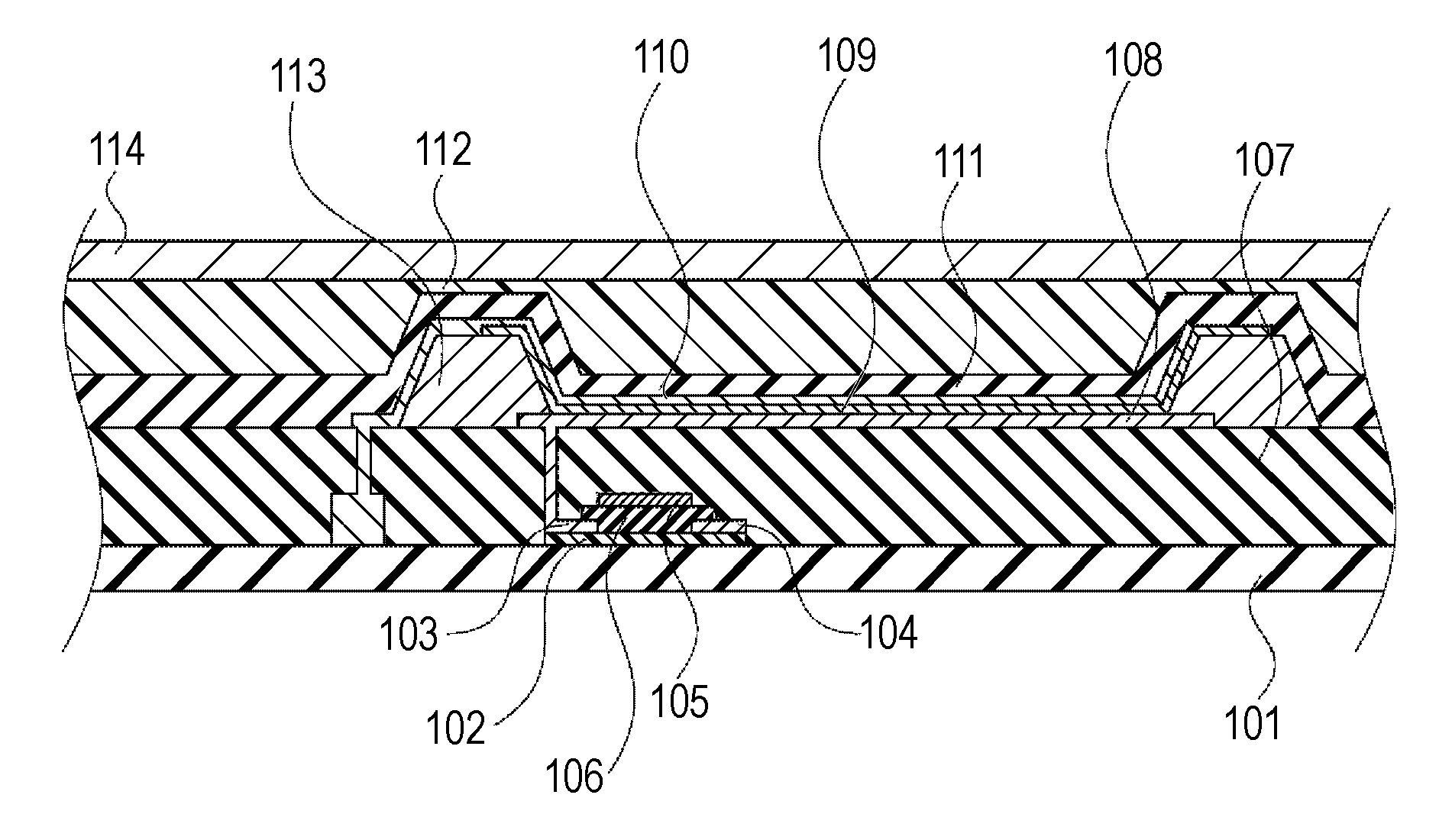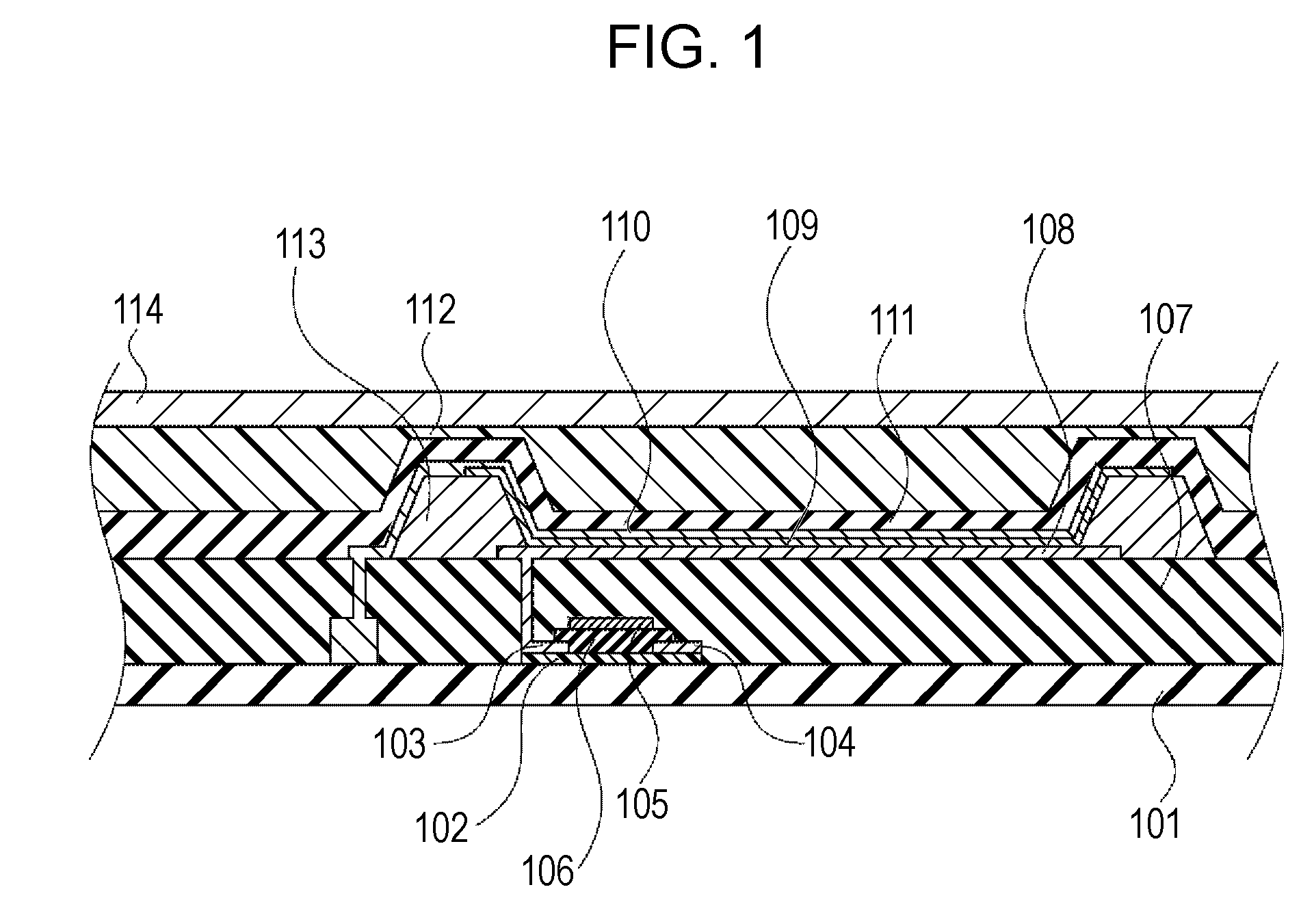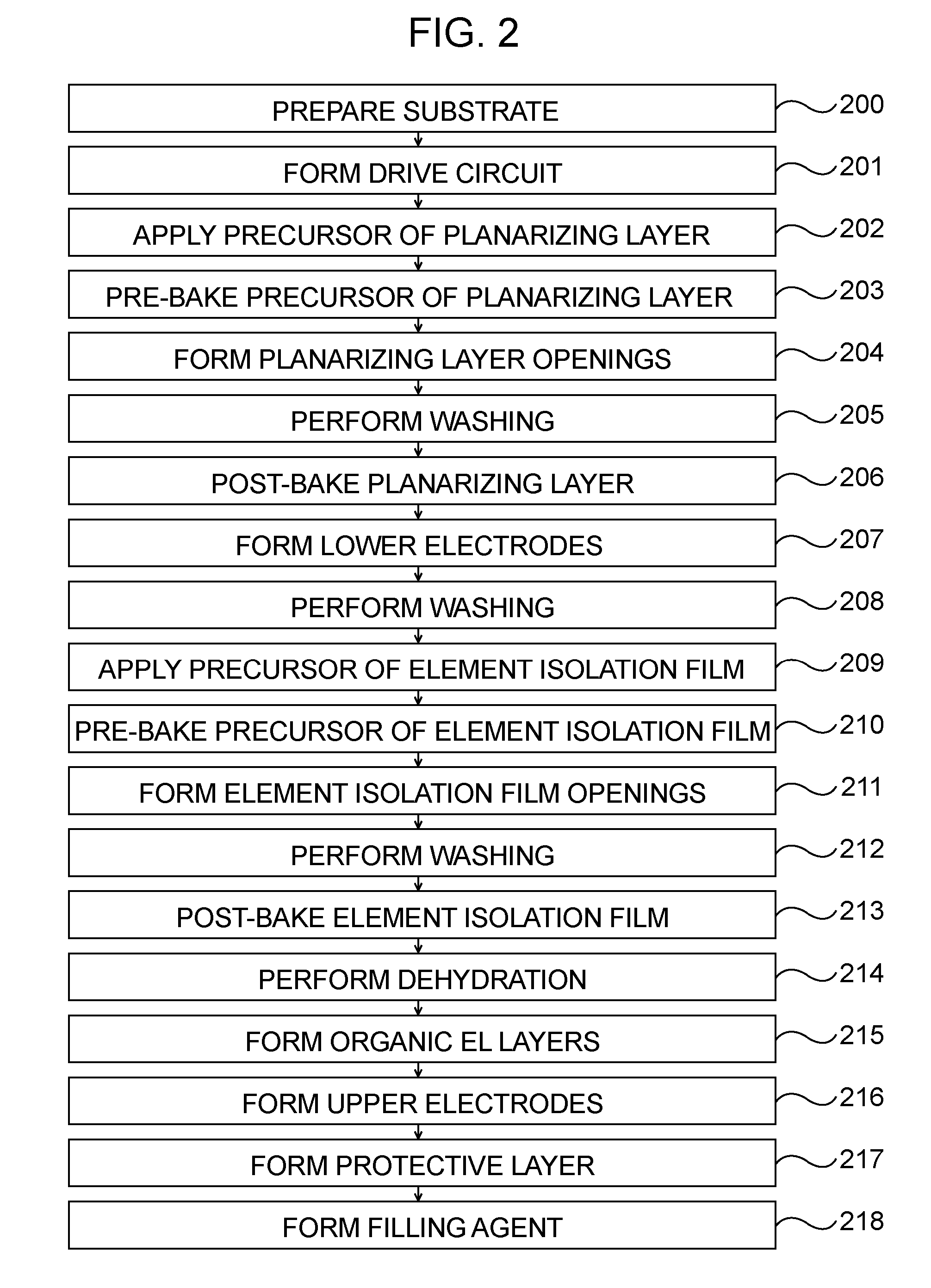Organic electroluminescent display device and manufacturing method thereof
a technology of electroluminescent display device and organic electroluminescent, which is applied in the direction of discharge tube luminescnet screen, discharge tube/lamp details, electric discharge lamps, etc., can solve the problems of wire breakage and electrode disconnection, and achieve the effect of maintaining the performance level and improving the planarizing layer
- Summary
- Abstract
- Description
- Claims
- Application Information
AI Technical Summary
Benefits of technology
Problems solved by technology
Method used
Image
Examples
example 1
[0111] The organic EL elements shown in FIG. 1 were formed on a glass substrate 0.8 mm thick, 450 mm wide, and 550 mm long. On the glass substrate, a circuit shown in FIG. 3 was formed for each element using a low-temperature polycrystalline silicon thin film, which was recrystallized by a KrF excimer laser (wavelength of 248 nm). As a circuit protective layer, an insulating silicon nitride layer having a thickness of approximately 400 nm was deposited on the circuits by a plasma CVD method at a frequency of 13.56 MHz using a gas mixture containing a silane gas, an ammonium gas, and a hydrogen gas at a ratio of 1:1:10 as a starting material gas. A composition was prepared composed of 60% of an oligomer formed from 3% of methyl methacrylic acid and 97% of methylmethacrylate and 40% of an oligomer formed from 3% of methyl methacrylic acid and 97% of butylmethacrylate.
[0112] Subsequently, 25 parts by weight of this composition was added to 100 parts by weight of diethylene glycol meth...
example 2
[0127] An organic EL element panel was formed using a methacrylate oligomer having a molecular weight of 1,000, which was the oligomer used in Example 1, in a manner equivalent to that in Example 1, except that the temperature increasing rate was changed as shown in Table 3. The hardness of the planarizing layer and the amount of the remaining oligomer were measured in a manner equivalent to that in Example 1. When the temperature increasing rate was high, a non-reaction component evaporated. As a result, a desired hardness could not be obtained. In addition, the amount of the remaining oligomer was large. On the other hand, when the temperature increasing rate was low, the amount of the oligomer decomposed by heat increased. As a result, the distortion and the number of pin holes increased. To evaluate the reliability, the heat cycle between 100° C. to −20° C. was repeatedly performed 20 times while the organic EL element was turned on. Subsequently, the reliability was evaluated b...
example 3
[0129] A planarizing layer having a thickness of 2 μm was deposited on a glass substrate under the same conditions as those in Example 2, in which the planarizing layer was formed at a temperature increasing rate of 10° C. / minute. Cr equivalent to that forming the lower electrode was deposited on the planarizing layer by vacuum evaporation so as to have a thickness of 100 nm. Before the deposition of the Cr, the surface of the planarizing layer was left in the atmosphere for one day and was then further irradiated with UV rays right before the deposition. The surface treatment of the planarizing layer was performed by changing the time for UV irradiation. The contact angle of the planarizing layer was measured by using a measurement device sold under the trade name “Drop Master 700” manufactured by Kyowa Interface Science Co., Ltd. The results are shown in Table 4. The adhesion of Cr deposited on the surface of the planarizing layer having the contact angle as described above was ev...
PUM
 Login to View More
Login to View More Abstract
Description
Claims
Application Information
 Login to View More
Login to View More - R&D
- Intellectual Property
- Life Sciences
- Materials
- Tech Scout
- Unparalleled Data Quality
- Higher Quality Content
- 60% Fewer Hallucinations
Browse by: Latest US Patents, China's latest patents, Technical Efficacy Thesaurus, Application Domain, Technology Topic, Popular Technical Reports.
© 2025 PatSnap. All rights reserved.Legal|Privacy policy|Modern Slavery Act Transparency Statement|Sitemap|About US| Contact US: help@patsnap.com



